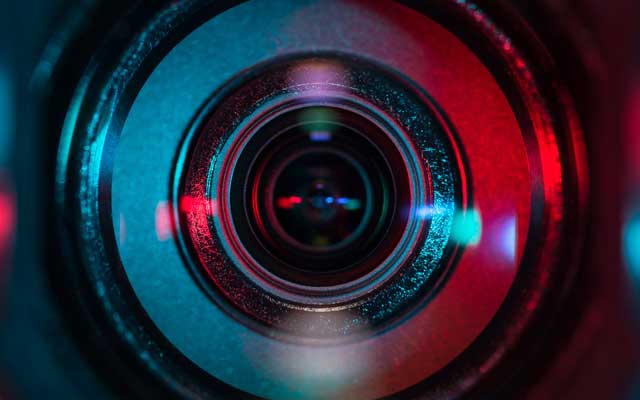Machine vision is technologies and methods of obtaining information based on automated image analysis. The term machine vision encompasses many technologies, including software and hardware, systems integration, and expertise.
Machine vision cameras transmit data in uncompressed format and have a high shooting speed. They use large-format sensors with a global shutter, high sensitivity and resolution, industrial data transmission interfaces, control and management of all sensor parameters, the presence of input / output lines for synchronization with external equipment, and the availability of tools for developing an image analysis program.
The main task of a machine vision camera is to obtain the highest quality image for subsequent data analysis in a program developed by the user.
What is machine vision made of?
The hardware (hardware) part of machine vision is based on various technical vision cameras, with additional equipment for them, which provides shooting and frame transmission. Software part - algorithms based on classical mathematical transformations and / or neural networks. The elements of the system can be either separate or assembled into one housing - such devices are called smart cameras.
To conduct a survey, the following elements of the system are minimally required:
- Light is a source of information for the camera, so the monitored object should be well illuminated, and most importantly, with constant brightness and without flickering.
- Synchronization sensor - an optical sensor of the presence of an object at the shooting location, an encoder or a signal from a PLC.
- A suitable machine vision camera with a compatible lens, which produces a frame of the required parameters (color, bit rate, resolution, frame size) at the required speed.
- PC with installed software - responsible for receiving and processing images from the camera. And also transfers the received data to the actuators or to the database.
Where is machine vision used?
In an effort to solve even the most difficult production tasks, camera manufacturers have created a large line of functional and reliable cameras. Their use has gone far beyond the production, now these cameras can be found in many sectors of the economy.
Production
As the main "generator" of tasks for machine vision, it has the largest number of possible applications. Moreover, production with machine vision can be either an "automatic plant" from industry 4.0, or a small sawmill with control of the input volume of wood. World experience shows a huge number of solved production problems. These are just some of the areas:
- Production lines
- Sorting food or minerals
- Robotics
- Diagnostics of infrastructure objects
- 3D scanning
- Instrumentation
- Video analytics
- Inspection and automation of welded works
- Labeling and aggregation
- Logistics (including track & trace)
- Output control of products
- Shooting in hazardous or inaccessible areas
- High-speed process control
Organization of movement
Automotive traffic control, ITS projects, infrastructure condition (scanning of asphalt concrete bed, railroad, contact network). Due to the reliability and unpretentiousness of machine vision cameras, they successfully solve these problems, being on the street and working 24/7, allowing to significantly increase transport safety.
Entertainment and film industry
Volumetric capture of VR / AR content, interaction with visitors using augmented reality animation, and much more - is not complete without machine vision cameras that can synchronize with each other and see not only color, but also in the IR range.
The science
Many scientific centers, universities, SKB and schools use machine vision for scientific and educational purposes. The machine vision camera market is rich in cameras with different specifications, resolutions, etc. very often, with the help of such cameras, the tasks of science are successfully solved:
- High speed cameras
- Large resolution cameras
- Cameras protected from water and temperature drops
- Monochrome cameras with 12 bit color depth (usually 8 bit - up to 256 color gradations)
- Wide spectrum sensitivity (cameras can shoot from NIR - to UV)
- The ability to use spectral filters
- Cameras that give a high-quality picture, which are much more compact than cameras
Sport
Photo finish systems, athlete tracking, soccer re-play systems with 3D visualization.
Facility security
Identifying a person by face in a crowd, recognizing the retina for accessing a room, creating a Three-dimensional face recognition system with laser projection, anonymous counting of people in a room - all this can be easily and reliably implemented on machine vision cameras.
Machine vision requirements
Many people mistakenly believe that conventional video surveillance or webcams can be used to solve industrial problems. In fact, there are a number of developed requirements for technical vision, which must be met by all equipment, incl. cameras to work stably in a production automation system:
Camera quality
The big difference between purely "computer" vision and "technical" or "machine" is the requirement for reliability and stability of the result. No production can afford to simply replace a failed camera for a while or reject the entire batch because the camera did not see it due to autofocus failure.
A machine vision complex must work reliably, like any other sensor - for many years to communicate the necessary information without operator intervention and with only a little maintenance. In machine vision, this is achieved through the use of an industrial-grade component base in all elements of the system, high-precision manufacturing and careful control of each element - all this leads to a significant increase in the cost of manufacturing a camera, PC, lens, cable, but guarantees a long service life in harsh industrial conditions.
Hardware capabilities
Many image processing algorithms, and even more so neural networks, are applicable to both scientific / educational and machine vision. But for the stability of the processing result, a stable picture is required from the camera - the algorithm should not try to "adjust" to the shooting conditions - since in this case it risks becoming a weak element of the system.
To ensure a high-quality image, machine vision cameras transmit data in an uncompressed format and have a high shooting speed. They use large-format sensors with a global shutter, high sensitivity and resolution, industrial data transmission interfaces, the presence of input / output lines for synchronization with external equipment. In the software shell of the camera, control and management of all parameters of the sensor is available,
SDK
It is imperative that you get a software development kit (SDK) with a machine vision camera. Through it, you receive an image from the camera with high-precision timecode for subsequent synchronization, adjust the camera parameters, resolution, shooting frequency, exposure, etc.
The SDK contains examples of interactions with the camera in various programming languages.
Calibration capability
A measurement system can be made from a machine vision camera, thanks to the high-precision manufacturing of components, the ability to fix all shooting parameters, including the focus of the lens. Subsequent calibration of such a camera will guarantee to receive real data from it, without discrepancy from vibrations or the influence of auto functions. This is especially useful when using a camera to control robotic arms.
Camera selection
When choosing a machine vision camera, you should be guided by the following parameters:
- data interface
- spectral range (visible, IR, SWIR, UV)
- resolution and sensor size
- required shooting speed
The lens for the camera must be selected based on the geometry of the problem being solved, the size of the camera matrix and the spectral range. We have a large selection of lenses from high quality Zeiss to reliable and affordable Azure.
If you have any difficulties with the selection of the optimal solution, you can always contact DZOptics specialists for technical advice. In our laboratory, we are always ready to reproduce your problem and show an example of its solution using the machine vision components we offer.





